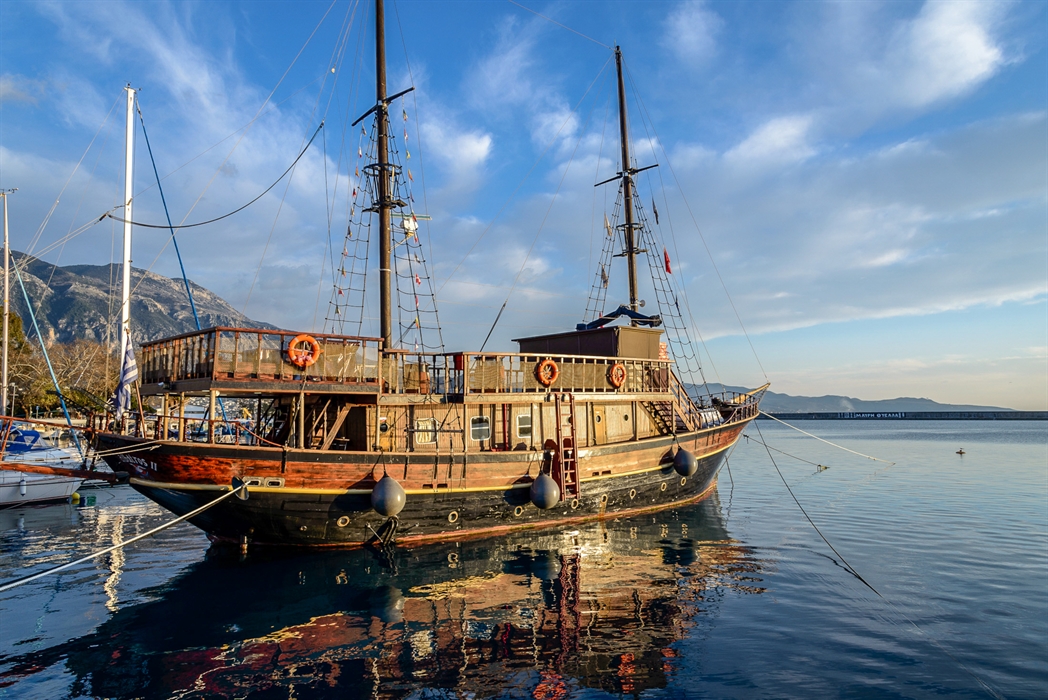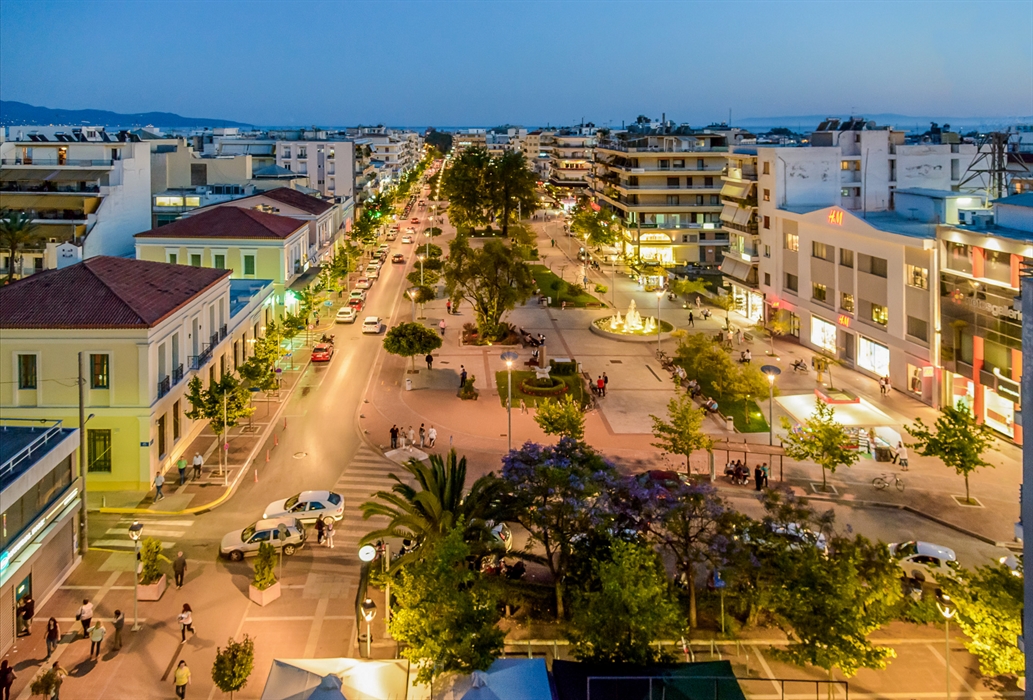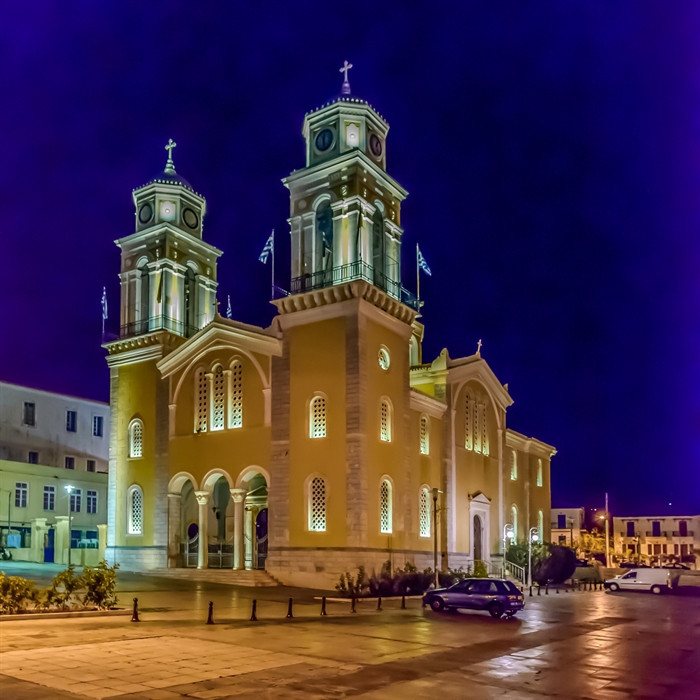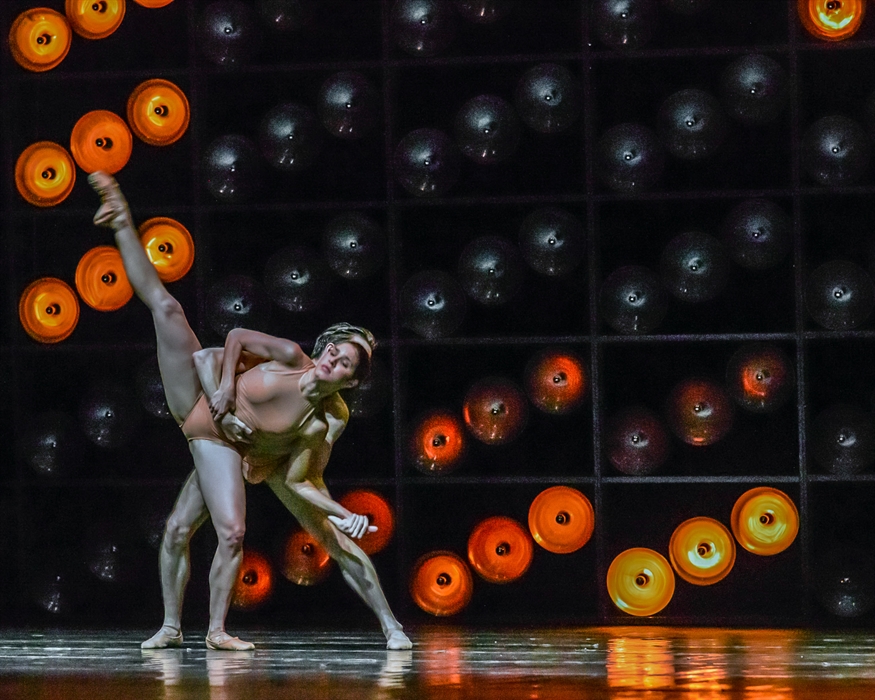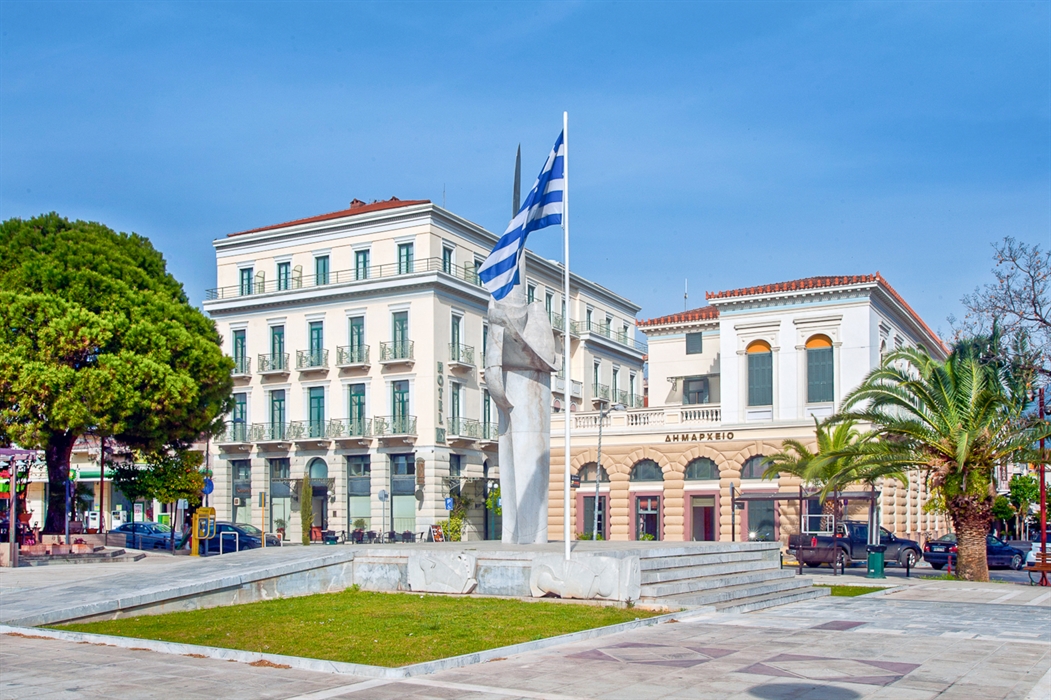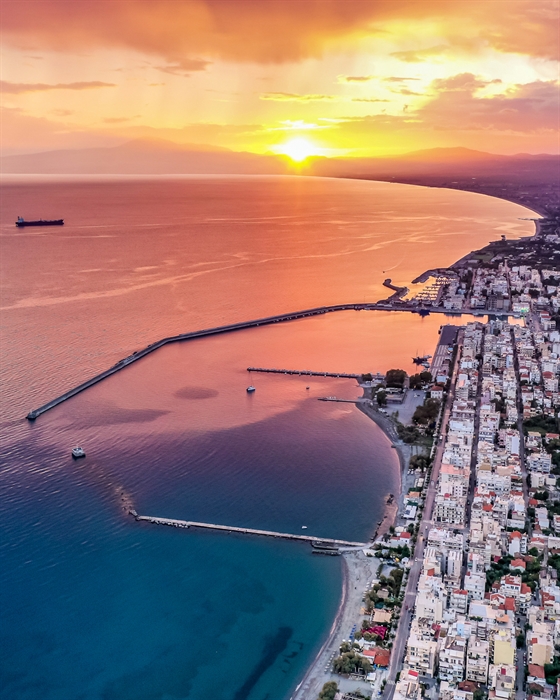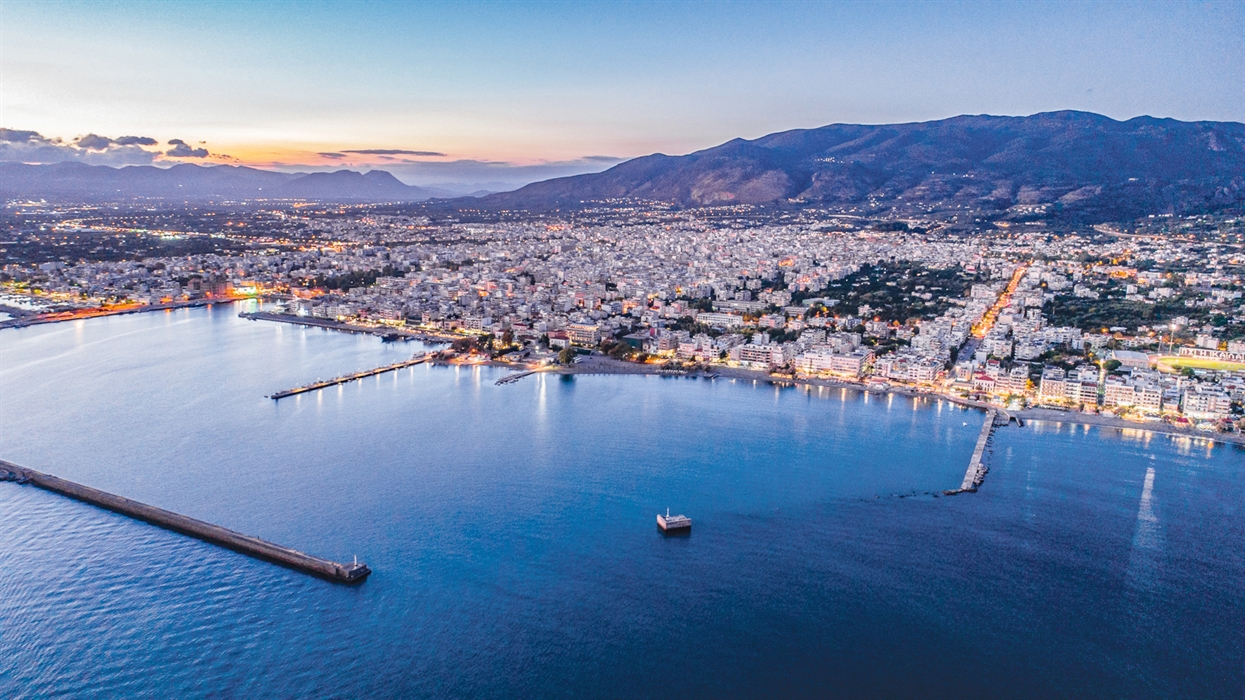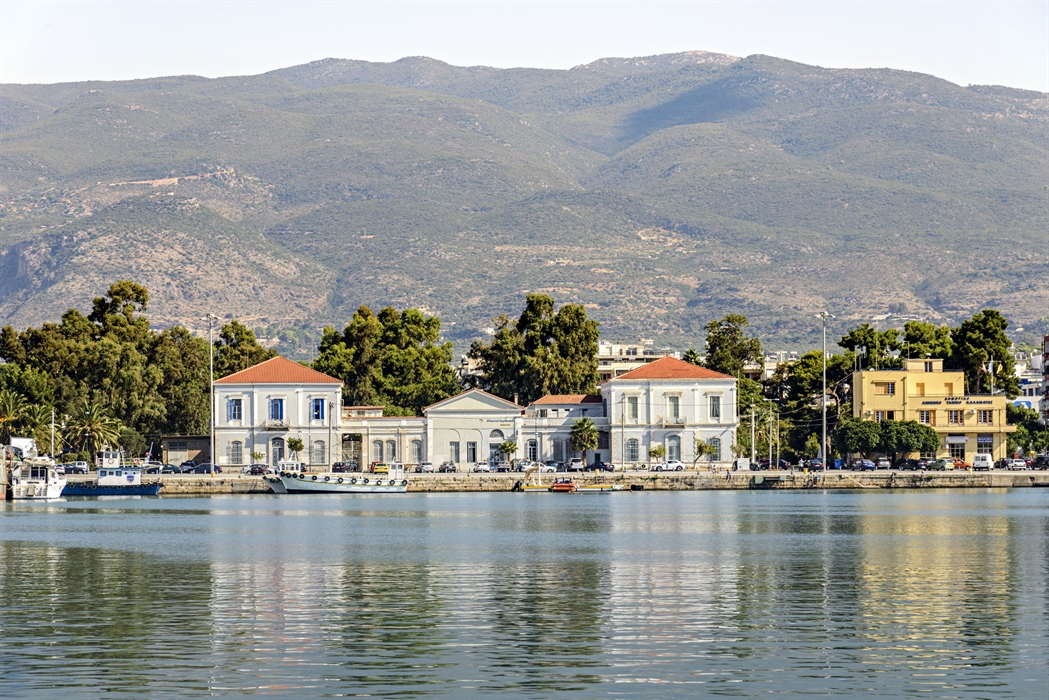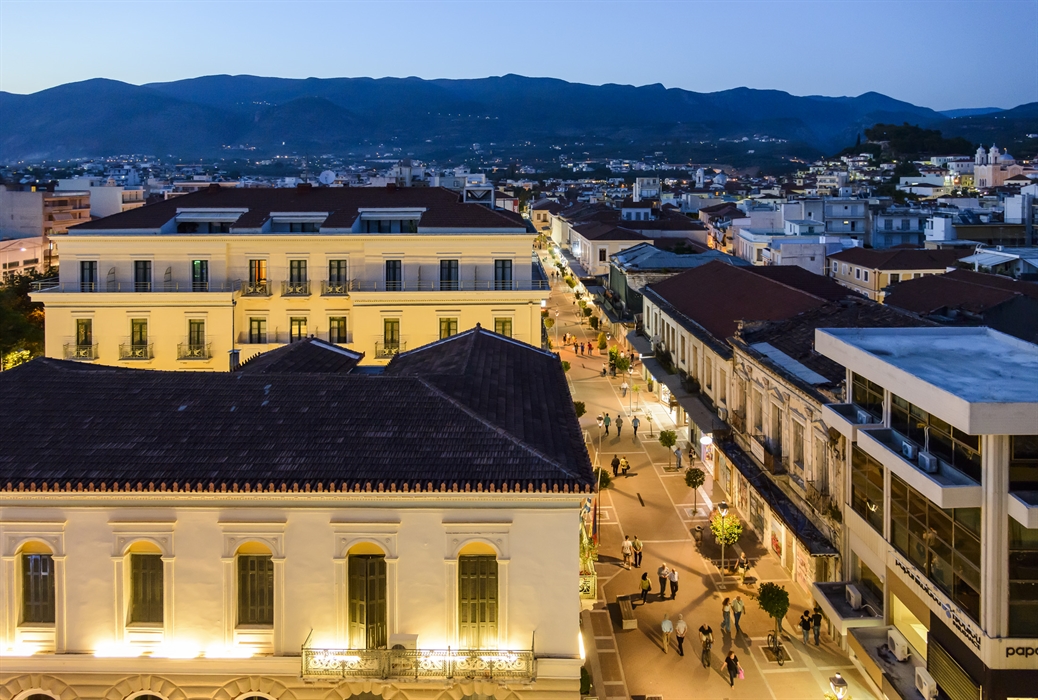Kalamata
Kalamata is a gorgeous destination. Nestled in the centre of the Messinian bay, at the foot of Mount Taygetos, lively, welcoming, fortunate to have a huge esplanade and sandy beaches within the city. You will be spoilt for choice when it comes to museums, old churches, neoclassical buildings, bustling squares and a huge variety of shops, restaurants, cafes and hotels. On top of that, Kalamata enjoys a vibrant arts and cultural scene.
Let’s start with one thing about holidaying in Kalamata -you’ll find yourself being more and more envious of the locals. As you enjoy your breakfast at a beachfront cafe and gaze out over the blue sea, you’ll start thinking how lucky everyone who lives here is!
Kalamata is a friendly and welcoming city. It is also the administrative, financial and commercial centre of the southwestern Peloponnese -so there’s no shortage of practical facilities. There’s a seafront that stretches for kilometres with sandy Blue Flag beaches, café-bars and restaurants. There is great cultural life too, as well as fascinating museums and a medieval castle. There are squares and pedestrian streets where you can wander and spend time people-watching, or admiring the historical churches and neoclassical buildings. It’s a good centre for shopping and there are neighbourhood coffee bars and restaurants. The nightlife is vibrant -especially during summer.
Kalamata is also an ideal base if you want to visit the nearby archaeological sites, castles or holiday resorts. There’s no need to worry about where to stay either, since there is a wide range of accommodation options.
The thing that most people connect with Kalamata are the world-famous Kalamata olives, a PDO product which is rightly known for its exceptional taste and texture.
If you know anything about Greek dancing, you might have heard of the Kalamatianos -a traditional dance which is taught in schools and is popular all over the country. The famous Kalamatian scarf, held by the lead dancer, is still woven on wooden looms at the Kalogreon Monastery.
Kalamata grew rapidly between the end of the 19th century and the beginning of the 20th century thanks to flourishing trade and industry (rolling mills, tobacco factories, textiles). This was when nearly all the buildings between the old town around the castle and the seafront were built. It has a thriving commercial port which has been the most important one in southern Mainland Greece since the 19th century.
TOWARDS THE SEA
The Customs-Port Authority, a complex of two-story and ground-floor buildings with neoclassical elements, is in the main square opposite the port.
The port itself was inaugurated in 1901 and spurred the city’s commercial development and its expansion down from the castle towards the sea. On the east side of the waterfront on Navarinou Street, you will come across several luxury hotels and restaurants etc with neoclassical features, and the city’s 2.5 km long eastern beach begins here.
KALAMATA’S BEACHES
Kalamata is lucky enough to have its own sandy beaches. The eastern one has everything you might need: large hotel units, busy beach bars, tavernas and ouzo bars, water sports, an amusement park. The beautiful view of Mount Taygetos is the beaches’ crowning glory. Blue Flags have been awarded to Anastasi area and the end of Navarino beach - so you can rest assured that the sea is clean and there is good tourist infrastructure. Seatrac facilities enable those with mobility problems to have independent access to the sea. The other organised beach with seatrac facilities is Kordias, 1.5 km to the west of the port. It features fine pebbles mixed with sand and has a great view of the Messinian Gulf. To the east of the city, there are many other popular organised beaches lined with lively beach bars.
CULTURE
Whenever you are in Kalamata you are almost bound to catch one of the dozens of cultural events which are organised here. Whether you are looking for theatre, dance, books, music, traditional festivals or activities for children, there’s always something on. The Municipality organises various events, including the Cultural Summer with interesting shows and celebrations taking place in various outdoor spaces. If you are lucky enough to be here for the International Dance Festival, then make sure you don’t miss out on the performances.
The Kalamata Performing Arts Theatre: The theatre group was founded in 1984 with the aim of cultivating interest in Greek and international, classical and modern theatre. They stay true to their goal and, in addition to performances, they organise lectures and presentations.
The Kalamata Dance Festival: This international festival has contributed to the flourishing of modern dance in Greece since 1995. It presents works "dedicated to the poetics of the human body, hosting creators who write the very history of modern dance. The performances we host are meant to inspire and galvanise the public into creating a communal life of values and meaning", as their website states. Read in more detail at: https://kalamatadancefestival.gr.
THE CASTLE
It was founded during the Byzantine period, but the ruins we see today date from the 13th century when major reconstruction work was undertaken during the reign of Godefroid I Villeardouin, the Crusader prince who founded the principality of Achaia.
The castle and its surroundings play a lively part in city life thanks to the small park around it and the open-air theatre that was built in 1950. The famous Kalamata Dance Festival and other cultural events are held there. Read more
THE MUSEUMS
Visiting the museums will keep you busy for hours -if not days! The obvious place to start is the Archaeological Museum of Messinia with its displays of antiquities dating from prehistoric times through to the Byzantine period. It is housed in a building located in the old Municipal Market.
The excellent Historical and Folklore Museum is housed in a neoclassical building which dates from the beginning of the 19th century and was granted to the Municipality by the Kyriakou family. Through the objects in its collections the museum narrates the story of Kalamata’s recent cultural history.
Next, don’t miss the Victoria Karelias Collection of Traditional Greek Costume. You will admire a resourceful, well organized thematic presentation of Greek traditional costumes -the most comprehensive in the country. An enchanting journey through history, culture, aesthetics and art.
The Kalamata Municipal Art Gallery has works by various artists -but its core is the collection of the Messinian engraver A. Tassos, who donated a large number of his creations. Finally, the Military Museum houses texts and photographic and audio-visual material from modern Greek history.
A TOUR TO KALAMATA The area to the south of the castle was the first to be inhabited when the Kalamatians decided to move outside the fortification. It has a large square which is dominated by the Ypapanti Cathedral. To the north of the church, on Alexandraki Street, you will find the Municipal Conservatory of Kalamata housed in a beautiful 19th century building. It gives lessons in a huge range of musical instruments and in various types of music -from classical, to traditional and Byzantine. The conservatory organises musical events, many of which are held outdoors.
The Paplomatadika area around the 23rd Martiou Square with the historic church of the Holy Apostles is a very popular spot for meeting up with friends, shopping or just strolling around the cobbled streets taking in the atmosphere. It is one of the liveliest parts of the historic centre. So, why not stop by for a coffee in a traditional café or grab something to eat in one of the many souvlaki grills or small tavernas?
The most impressive building in the area is the church of the Holy Apostles which dates back to the middle Byzantine period. The domed basilica was built during the 2nd period of Venetian rule, and was where the local chieftains blessed the weapons for the 1821 revolution.
Aristomenous was the first road to connect the old part of the city with the seafront, and it is still Kalamata’s administrative and economic centre. It is lined with various shops, banks etc, and the central square is here.
The road ends in the municipal Railway Park. It covers 54 acres and its attractions include the Station Master’s building, steam trains, passenger and freight wagons. There are also playgrounds if you’ve got children who want to let off some steam.
The town hall is also on Aristomenous Street, at the intersection with Koumandou Street. It is a two-storey building with an eclectic selection of Italian-influenced masonry, marble balconies and sculpted decorative elements. To its north is the historic four-storey Rex hotel which opened in 1899 under the name "Panellinion". It has now been completely renovated.
Location
Find the destination on the interactive map below.
Σχετικό περιεχόμενο χρηστών (UGC)
Ενημερωθείτε για ενδιαφέροντα θέματα γύρω από τον προορισμό μέσα από το περιεχόμενο των χρηστών μας
Discover 7 hidden gems of the Peloponnese
Many of you may have already visited some of the most renowned attractions…
TOP 10 archaeological museums in the Peloponnese
Olympia, Mycenae, Epidaurus, Diros Cave, Ancient Corinth, Messene and…
TOP 10 Castles in the Peloponnese
Castles galore! Mystras, Monemvasia, Palamidi, Methoni, Koroni,…
Newsletters
- About us
- FAQ's
- Map
- Tourism information centers
- Disclaimer
- Sitemap
- Our brand
- Media roum
- Adding your bussiness
- Corporate
- MICE

Peloponnese. Greece beyond the obvious





Design and creation from Cosmote
Marinas and Moorings
Diving centers
Get inspired
- Media gallery
- Blog
- The Peloponnese in the media
- Your feedback
- Users' general content
- Users' local products
- Users' events content
- Ask a local
More
- Accommodation
- Travel agencies
- Restaurants
- Services
- Destinations Map
- Weather
- Public transport
- Events
- Frequently asked questions
- Useful phones
- B2B
- Destination Data
- Contact

